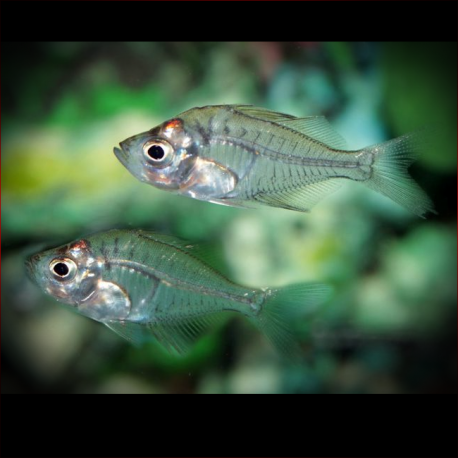More info
Datasheet
| Minimum Tank Size | 110 litres / 29.06 US gallons |
| Maximum Size | 20.0cm / 7.87inches |
| Temperature | 18°C / 64.40°F - 25°C / 77.00°F |
| Hardness | 8-20ºdH |
| pH | 6.5-8.0 |
General Description
The Duskyfin Glass Fish, scientifically known as Parambassis Wolffii, is an infrequent import commonly found in its native countries of Cambodia, Thailand, Laos, Vietnam, and Indonesia, where it serves as a food fish. Belonging to the Ambassidae family, this species can grow up to 20.0cm in size.
Aquarium Setup
To cater to the needs of the Duskyfin Glass Fish, a minimum tank size of 110 litres is recommended. The tank should have a dark substrate to reduce the species' nervousness and showcase its vibrant colors. Adding dense plant areas, floating vegetation, rocks, and driftwood can provide ample cover. Being a freshwater species, there is no need to add salt to the tank. For specific water conditions, a pH level of 6.5-8.0, hardness of 8-20 degrees dH, and a temperature range of 18-25 degrees Celsius are suitable.
Behaviour
Predatory by nature, the Duskyfin Glass Fish tends to consume small tankmates, making it more suitable for cohabitation with larger species like gouramis, medium-sized barbs, and rainbowfish. Being a shoaling species, it thrives best when kept in groups of at least 6 individuals.
Feeding and Diet
This species leans towards a more predatory diet compared to other Parambassis species. While it may accept dried foods, they should not be the primary diet. Offering live foods such as small earthworms, bloodworms, and frozen options like prawns, bloodworms, and brine shrimp is essential for their nutrition.
Reproduction & Dimorphism
Notably, there is limited information on the captive breeding of the Duskyfin Glass Fish. However, its reproduction process likely mirrors that of P. ranga. Sexual dimorphism is not well-documented, but adult females may appear fuller in the belly during breeding conditions.
Habitat and Distribution
The Duskyfin Glass Fish thrives in slow-moving and standing waters, including floodplain habitats. Its distribution spans Cambodia, Thailand, Laos, Vietnam, and Indonesia.

